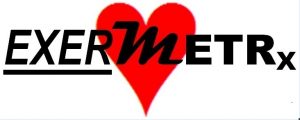 ……… advocates, promotes and provides Heart Rate Monitored Exercise as an innovative and “measurable” Wellness, Disease Prevention and Disease Management Program– via the Measurement & Quantification of Exercise using existing, proven and portable Heart Rate Monitoring (HRM) Technology
……… advocates, promotes and provides Heart Rate Monitored Exercise as an innovative and “measurable” Wellness, Disease Prevention and Disease Management Program– via the Measurement & Quantification of Exercise using existing, proven and portable Heart Rate Monitoring (HRM) Technology
exercise improves and preserves health
Regular exercise has consistently been acknowledged as contributing to improved health for any person, regardless of age and current health status. Significant observational and experimental studies clearly support the value of physical activity / exercise to health. The current prevalence of cardiovascular disease, cancer, diabetes and a host of other chronic disease disorders within the population are attributable, in part, to “insufficient” physical activity over time by the sufferers of these diseases. Current research has established that a minor incremental increase in exercise by these patients would lead to a greater incremental improvement in their health.
exercise assessment in the physician office
In order to “account” for the value of regular exercise to an individual’s health status and health maintenance, the contribution of regular exercise must be addressed during the physician visit. Unfortunately, this “exercise contribution” to health status has not easily lent itself to measurement, recording, reporting and trending within the medical care setting. A physician’s current evaluation of their patient’s compliance with exercise guidelines is not precisely defined and is often limited to the patient’s own “general” description of their exercise habits, if at all.
heart rate monitored exercise & cardio-respiratory fitness
Fortunately, exercise can be, and has been, measured and quantified in terms of its 3 key components – frequency, duration and intensity – via the use of existing wrist-mounted heart rate monitors (HRM) which have been in active use for athletic training and conditioning for some time. The HRM technology has also improved along with the advances in personal computers and smart phones. The current challenges and opportunities are to adapt the use of HRM technology to not only measure an individual’s cardio-respiratory fitness (CRF) as an important vital sign during a physician office visit — but also to quantify and report an individual’s physical activity habits in the form and content required to determine how well the individual measures up to the existing, published physical activity minimum standards.
heart rate monitored exercise to comply with published physical activity guidelines for all individuals
As non-exercise Cardio-respiratory Fitness Testing (neCFT) provides the means to determine an individual’s current level of Cardio-respiratory Fitness (CRF), Heart Rate Monitored (HRM) Exercise provides the data collection and data reporting method to enable any individual to easily record and measure their own adherence to regular sessions of physical activity. ExerMetRx recommends the portable heart rate monitors (HRM) we use to measure cardio-respiratory fitness (CRF) for the patients of our primary care physician clients. We provide these portable HRM’s to the patient as part of a comprehensive HRM Physical Activity / Exercise program.
Our program includes training in the proper use of the HRM, guidance on the personalized programming of the types and variety of the “exercise sessions” preferred by the individual and the upload and analysis of the exercise data to individual accounts within our customized database. One of the most important features of our program is our ability to provide reports of any participating individual’s compliance with the current recommended and published HHS Physical Activity Guidelines for their own health improvement and health maintenance.
heart rate monitored exercise to meet published physical activity standards with precision and efficiency
These heart rate monitors are wrist mounted, record the date / time (frequency) and the number of minutes of an exercise session (duration) and, most importantly, the heart rate (intensity) of the exercising individual during the exercise session. These devices have features which provide for pre-programmed exercise sessions which include intervals of exercise intensity “stages” within an exercise session. This feature allows an individual to record and measure their “moderate” levels and their “vigorous” levels of physical exertion during the exercise session.
measurement of exercise intensity is key to achieving individualized “exercise value”
These exercise intensity stages are based on an individual’s maximum heart rate (MHR), which varies with age. The two (2) “relative” exercise intensity stages are defined by a continuous range of percentages of an individual’s own maximum heart rate (MHR% range) that is maintained by the individual during exercise. Moderate intensity exercise requires a lower MHR% range while Vigorous intensity exercise requires a higher MHR% range. These ranges have been established by the HHS Physical Activity Guidelines.
Our comprehensive program educates each participant in the calculation of their individualized “moderate intensity” and “vigorous intensity” MHR% ranges and the programming of these two “exercise intensity” ranges within the portable heart rate monitor (HRM) we recommend and can provide. In addition, the physical activity reports which we can generate within our reporting database provide a variety of features, one of which is the measurement of an individual’s HRM exercises as compared to the Health and Human Services (HHS) minimum “regular physical activity” standards.
Heart Rate Monitored Physical Activity for Measuring Exercise Intensity
For moderate physical activity, the target heart rate range should be between 64% and 76% of the individual’s age-related maximum heart rate.
For vigorous physical activity, the target heart rate range should be between 77% and 93% of the individual’s age-related maximum heart rate.
use of HRM technology is the intelligent way to exercise
Heart rate monitored exercise sessions can be stored on the recommended HRM device and uploaded, via login to our customized database, which stores individualized exercise session records, provides exercise data analysis and reporting. This data upload and reporting feature serves as a mechanism to ensure the patient’s compliance and accountability in following an individualized exercise regimen.
It also provides a reporting mechanism for performance & progress feedback directly to the exercising patient and for review and oversight by the patient’s physician. Finally, it provides a platform for comparative analysis of the aggregate data reported by all patients — for identification and measurement of best practices and population-based data collection.
The use of these current “personal” heart rate monitoring (HRM) devices and their data collection, compilation, reporting and analysis features provide a platform for direct measurement, documentation and trending of any individual’s exercise. This platform provides the foundation for recording, tracking and trending the cardio-respiratory fitness (CRF) “vital sign” as a key measure of health which is regularly reviewed during physician office visits.
This technology provides for the individual’s management and reporting of a variety of heart-rate “measured” exercise activities. These activities can be safely conducted according to “safe exercise maximums” based on the age and physical condition of the individual. These “safe exercise maximums” will also be prescribed and monitored by the individual’s primary care physician based on the patient’s regularly “measured” cardio-respiratory fitness (CRF) “vital sign.”

 ……… advocates, promotes and provides Heart Rate Monitored Exercise as an innovative and “measurable” Wellness, Disease Prevention and Disease Management Program– via the Measurement & Quantification of Exercise using existing, proven and portable Heart Rate Monitoring (HRM) Technology
……… advocates, promotes and provides Heart Rate Monitored Exercise as an innovative and “measurable” Wellness, Disease Prevention and Disease Management Program– via the Measurement & Quantification of Exercise using existing, proven and portable Heart Rate Monitoring (HRM) Technology